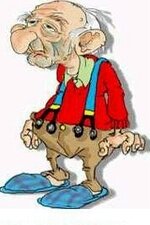- Messages
- 945
- Reactions
- 1,147
So Missouri Bullet Company has an informative page on their site that discusses "optimal" bullet hardness. I've read it before, but last night, a couple of things actually sank in  . First, whoever wrote the page was mixing CUP and PSI, not an egregious error, but it leads to questions of competence. Further on, there's this slick little formula for determining "optimal" hardness, based on cartridge pressure divided by a constant, and yielding a BHN number. MBC happens to sell bullets in 2 different hardnesses, 12 and 18 BHN. Based on the formula, 18 is just right for full power .45 ACP loads. Problem is, using the same formula for 10mm pressure gives a BHN of 28. All of which begs a couple of questions.
. First, whoever wrote the page was mixing CUP and PSI, not an egregious error, but it leads to questions of competence. Further on, there's this slick little formula for determining "optimal" hardness, based on cartridge pressure divided by a constant, and yielding a BHN number. MBC happens to sell bullets in 2 different hardnesses, 12 and 18 BHN. Based on the formula, 18 is just right for full power .45 ACP loads. Problem is, using the same formula for 10mm pressure gives a BHN of 28. All of which begs a couple of questions.
First, is this formula for real, or just marketing hype? And second, if it is real, is it telling me I probably shouldn't be using cast lead bullets in the 10mm? BTW, the formula reads as follows:
Optimal BHN=Pressure(PSI)/(1422 x .90)
And finally, how hard can lead get, and if the formula is correct, can you get lead bullets up around 30 BHN? And does it really matter all that much? Thanks!
Dave
First, is this formula for real, or just marketing hype? And second, if it is real, is it telling me I probably shouldn't be using cast lead bullets in the 10mm? BTW, the formula reads as follows:
Optimal BHN=Pressure(PSI)/(1422 x .90)
And finally, how hard can lead get, and if the formula is correct, can you get lead bullets up around 30 BHN? And does it really matter all that much? Thanks!
Dave








 I got my 30cal aluminum GC's in from Sage 4 days ago so I am now putting them on.
I got my 30cal aluminum GC's in from Sage 4 days ago so I am now putting them on.




